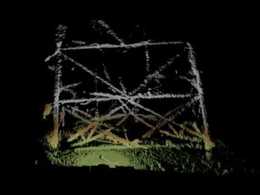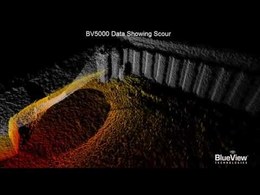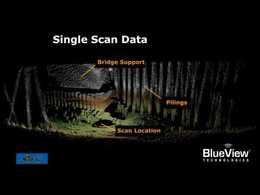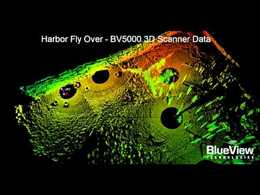DAM OUTFLOW TUBES INSPECTION
Underwater infrastructures worldwide need to be inspected regularly for problems caused by corrosion, scour, undercut, impact damage and debris. Diving engineers will typically inspect these structures visually when water conditions allow, and by hand when working in murky water. Divers also regularly need to work in possibly unsafe environments without knowing what the area looks like prior to getting in the water. Sonar on the other hand, can produce high accuracy 2D and 3D structure and environmental data in even zero visibility water conditions. For these reasons, sonar is quickly becoming the tool of choice for underwater inspection of bridge structures to enhance traditional inspection methods.
Teledyne BlueView's 2D imaging sonar is designed for high resolution imaging that provides detailed pictures in any water condition. Imaging sonar is well suited for general inspections, environment evaluations and real time diver monitoring. They can be mounted on poles, small vessels, tripods, ROVs, and even diver hand held systems. They have the ability to image areas around bridge footers, ports, harbors, dams, as well as identify damage, debris and suspect areas which may require continued monitoring.
Teledyne BlueView's 3D mechanical scanning sonar is lightweight and easily deployed off the side of a bridge or from a small vessel to collect 3D point cloud data. The high resolution point cloud data provides valuable information on underwater bridge structures such as damaged locations, undercut measurements, depth soundings and other standard inspection information. These high quality and high density data sets allow the user to make detailed analysis interpretation, and measurements of the inspection area which becomes particularly useful as some diving inspection methods are prone to human error.
With the ability to inspect with the 2D system and measure with the 3D system, Teledyne BlueView sonar is very complimentary tools. Having the capability to record current conditions and compare with previous and future inspections enhances nearly any type of underwater inspection operation, increases the value of deliverables, and improves the safety of inspection divers by raising their situational awareness. These are some of the many advantages of utilizing underwater imaging equipment.






